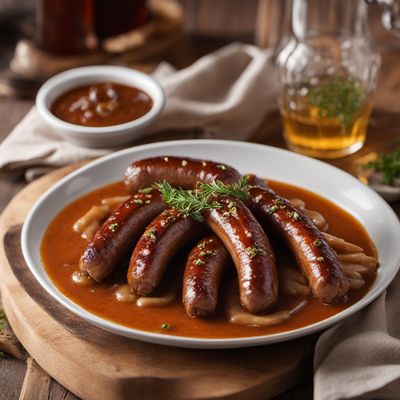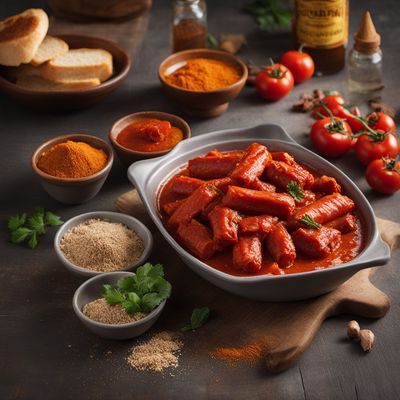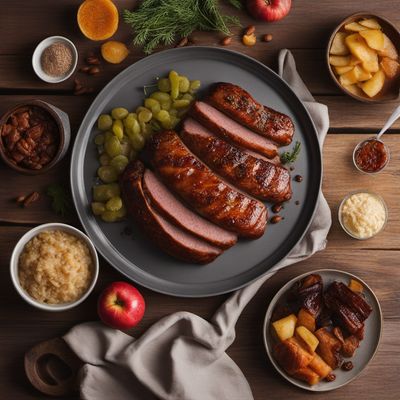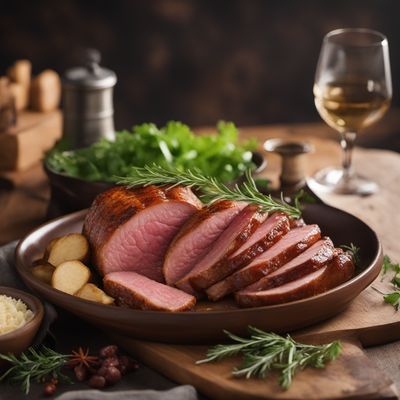
Ingredient
Fresh bratwurst
"Savory Sausage Delight: Exploring the World of Fresh Bratwurst"
Fresh bratwurst is a type of sausage made from finely ground pork, beef, or veal, mixed with a blend of spices such as salt, pepper, nutmeg, and herbs like parsley. It has a distinctive cylindrical shape and is usually sold in uncooked form. The texture of fresh bratwurst is tender and juicy, with a slightly coarse consistency. Its appearance is characterized by a pale pink color and a thin casing that encloses the flavorful meat mixture.
Origins and history
Bratwurst originated in Germany and has a rich history dating back to the 14th century. It is particularly associated with the region of Franconia, where it gained popularity during the Middle Ages. Over time, bratwurst became a staple in German cuisine and eventually spread to other European countries and the United States.
Nutritional information
Fresh bratwurst is a good source of protein, providing approximately 15 grams per serving. It also contains essential vitamins and minerals, including vitamin B12, iron, and zinc. However, it is important to note that bratwurst is relatively high in fat and calories, so moderation is key.
Allergens
Fresh bratwurst may contain allergens such as wheat, soy, or dairy, depending on the specific recipe or brand. It is important to check the ingredient list or consult with the manufacturer if you have any allergies or dietary restrictions.
How to select
When selecting fresh bratwurst, look for packages that are tightly sealed and have a fresh, pink color. Avoid any packages with a strong odor or signs of discoloration. Additionally, choose bratwurst that is made with high-quality meat and minimal fillers for the best flavor and texture.
Storage recommendations
Fresh bratwurst should be refrigerated and consumed within a few days of purchase. To extend its shelf life, you can freeze it in airtight packaging for up to three months. Thaw frozen bratwurst in the refrigerator before cooking.
How to produce
While it is best to leave the production of fresh bratwurst to professional butchers, ambitious home cooks can try making their own by grinding a mixture of pork, beef, or veal with the desired spices and herbs, and then stuffing the mixture into natural casings or forming it into patties.
Preparation tips
Fresh bratwurst can be cooked in various ways, including grilling, pan-frying, or baking. Before cooking, prick the bratwurst with a fork to prevent it from bursting. To enhance the flavor, you can marinate the bratwurst in beer or other liquids before cooking. Serve it on a bun with sauerkraut and mustard for a classic bratwurst sandwich, or incorporate it into stews, casseroles, or pasta dishes for added depth of flavor.
Culinary uses
Fresh bratwurst is commonly used in German cuisine, where it is often grilled and served with sauerkraut and mustard. It can also be added to soups, stews, or pasta dishes to infuse them with its savory flavor. In addition, bratwurst can be sliced and used as a pizza topping or incorporated into breakfast dishes like omelets or breakfast burritos.
Availability
Fresh bratwurst is commonly available in Germany, as well as in countries with a strong German culinary influence, such as the United States, Canada, and parts of Europe.
More ingredients from this category

Italian-style sausage
Savory Sausage Delight

Fresh spiced sausages in casing
Sausage Sensation: Unleashing the Flavors of Fresh Spiced Sausages

Fresh bulk sausages
The Savory Links

Breakfast-type sausage
The Savory Morning Delight: Breakfast-Type Sausage

Chipolata-type sausage
The Petite Pleasure: Chipolata Delights
Recipes using Fresh bratwurst » Browse all

Classic Cheese Coney Hot Dog
Savory Delight: The Ultimate Cheese Coney Hot Dog

Bratwurst in Beer Sauce
Savory German Bratwurst Delight

Homemade Currywurst with Spiced Tomato Sauce
Savory German Delight: Homemade Currywurst with a Twist

Bavarian Hot Pot
Bavarian Delight: Hearty Hot Pot with a German Twist

Homestyle Corn Dogs
Golden Bites of Delight: Homestyle Corn Dogs

Barros Jarpa Franconian Style
Cheesy Ham Sandwich with a Franconian Twist

German Pork Feast
Hearty German Schlachteplatte: A Pork Lover's Delight

Mecklenburg Booyah
Hearty Mecklenburg Booyah: A Taste of Tradition

Berner Platte - Swiss Delight
Hearty Swiss Platter: A Celebration of Flavors

Himmel und Erde (Heaven and Earth)
Harmony of Flavors: Himmel und Erde - A German Delight

East Indian Spiced Beer Brats
Tandoori Beer Brats: A Fusion of German and East Indian Flavors

German Beer Brats
Sizzling Bratwurst in a Beer Bath